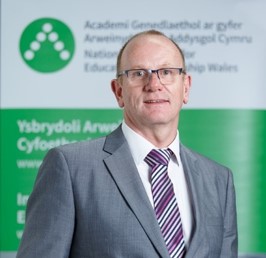Durham University
"There is a need to create a love for learning in students and this is just one way of doing it..."
Dr Nkaepe Olaniyi


The Challenge
When I first started teaching at an International Study Centre, I was not fully aware of threshold concepts in Physics. In fact, the issue I faced was with a topic where most students seemed to fail or just not attempt the exam questions, Thermodynamics. I have to admit that it was out of desperation that I looked at other ways of engaging students in this topic. Even though teaching at QCF Level 3 (equivalent to A-levels), this topic does seem counter-intuitive in certain aspects and very troublesome to students when encountered for the first time. Yet, this is a topic that is fundamental to one’s understanding of the physical world; its focus being the creation, transfer and use of heat energy.
The Solution
It was during this time that a colleague mentioned the use of interactive videos. Looking further into it, I realised that a full Flipped Lesson may be what was needed to turn things around for the students. There are two cohort intakes in the Centre where I worked. The September 2016/17 cohort had already taken their exam. Even though most students passed the exam, the questions on thermodynamics proved to be very unpopular; only half of the students attempted the three questions on the topic and most scored half of the full marks for them. Therefore, the January cohort were going to be the first to get a taste of this new structure.
The Flipped Lesson involved the use of interactive videos, lecture notes, key websites and a self-assessed test. The use of formative self-assessment was to help the students’ determine if they have really understood what they had learned; a key aspect of meta-learning (Timmermans and Meyer, 2017). The exam results for this cohort were positive - 21 out of 26 students did well in this topic, while 19 passed the exam (that is, gaining over 40%). This is in line with research, which shows that this form of active learning does have a positive effect on results (University of Plymouth, 2014 and Freeman et al, 2014). The feedback from the students showed that, in spite of the initial hesitancy, they enjoyed the lesson and learned a lot on the topic. They also wanted more guidance on what they were supposed to learn.
It was in response to the request for more guidance that I decided to add another element to the Flipped Lesson for this topic in the next academic year. I wanted to accomplish this whilst still being the “guide on the side” (King 1993). I had been using Vevox during my lessons as a polling system. The Q&A section did not initially seem very popular among my students during the lesson but it seemed to be the solution to my conundrum. It would provide an avenue for the student voice, highlighting their thoughts on the subject. To give it structure, I created questions based on the learning outcomes of the lesson, for example, “What factors can affect the thermodynamic state of a system?” and “What is a Carnot engine?”.
So the learning still took place at home. Then in class, I started with the “guide questions” being displayed and the students providing answers, which I would moderate via Vevox before sharing. With questions that seemed to cause some confusion, we could discuss common answers that were incorrect and those that were correct. The emphasis was on a class discussion rather than just lecturing them on what was right or wrong. I was then able to collate all the moderated answers via an Excel spreadsheet and place them on the VLE for the students to review.
The Results
61% of the students found the use of guide questions very useful, agreeing or strongly agree to that question on the feedback form. The exam results were also positive. For the September 2017/18 cohort, 40 out of the 45 students did well in this topic and all 45 passed the exam. In the January 2017/18, 25 out of the 27 students did well in this topic, with 23 passing the exam. The improved exam scores seemed to show that the use of the flipped lesson might have also improved the students’ general study skills.
In conclusion, there is a need to create a love for learning in students and this is just one way of doing it. There certainly will be an initial resistance from students, as the Flipped Classroom format may seem like more work to them (Simonson, 2017). Hence, there is a need to ensure that they are well aware of the reasons for using this format and the gains that come out of it. These gains not only include better exam results but also, as it seems, improved study skills, with the emphasis on self and peer assessment.
Cousin, G. (2006). An introduction to threshold concepts. Planet No 17. Available at: https://www.ee.ucl.ac.uk/~mflanaga/Cousin%20Planet%2017.pdf [Last accessed 29/10/2017]
Freeman, S., Eddy, S., McDonough, M., Smith, M., Okoroafor, N., Jordt, H., and Wenderoth, M. (2014). Active learning increases student performance in Science, Engineering, and Mathematics, [online] Proceedings of the National Academy of Sciences of the United States of America, 111:23, 8410 – 8415, Available at: http://www.pnas.org/content/111/23/8410.full [Last accessed 30/05/2018]
Houghton, W., 2004. Engineering Subject Centre Guide: Learning and Teaching Theory for Engineering Academics. Engineering Subject Centre: The Higher Education Academy. Available at: https://www.heacademy.ac.uk/system/files/learning-teaching-theory.pdf [Last accessed 08/10/2017].
King, A. (1993). From Sage on the Stage to Guide on the Side. College Teaching. 41:1 (Winter), 30- 35.
Meyer, J. and Land, R. (2003). Threshold Concepts and Troublesome Knowledge: Linkages to Ways of Thinking and Practising within the Disciplines. Occasional Report 4. ETL Project, Universities of Edinburgh, Coventry and Durham. Available at: http://www.etl.tla.ed.ac.uk//docs/ETLreport4.pdf [Last accessed 29/10/2017]
Nicola-Richmond, K., Pépin, G., Larkin, H. and Taylor, C. (2018) Threshold concepts in higher education: a synthesis of the literature relating to measurement of threshold crossing. Higher Education Research & Development, 37:1, 101-114, DOI: 10.1080/07294360.2017.1339181
Simonson, S. R. (2017) To Flip or Not to Flip: What Are the Questions? Education Sciences. 7:3, 71. DOI: 10.3390/educsci7030071.
Timmermans, T. & Meyer, J. (2017). A framework for working with university teachers to create and embed ‘Integrated Threshold Concept Knowledge’ (ITCK) in their practice. International Journal for Academic Development, DOI: 10.1080/1360144X.2017.1388241
University of Plymouth (2014). 7 Steps to a Flipped Classroom. University of Plymouth: Educational Development Teaching and Learning. [pdf] Available at: https://www.plymouth.ac.uk/uploads/production/document/path/2/2399/7_Steps_to_a_Flipped_Classroom.pdf [Last accessed 30/05/2018]


